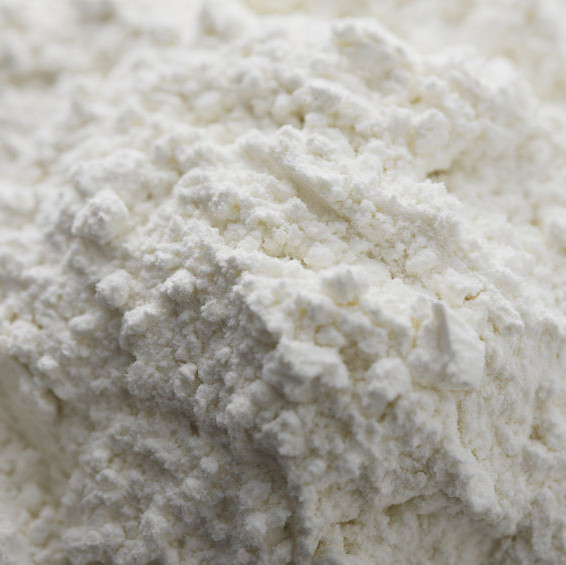
Flour
Also Known as Wheat Flour
What is Flour?
Flour is a fine powder made by grinding wheat kernels. It is the main component of foods such as bread, crackers, pasta, tortillas, cakes, cookies and pastries.
Among other grains, wheat flour is unique due to its ability to form a gluten network when mixed with water. This property is responsible for the rise in yeasted dough and puff pastry. There are many varieties and types, but a few common kinds are:
- Bread flour
- Cake flour
- All-purpose
- Whole wheat
- Semolina
- Farina
Origin
The first flour was produced around 6000 BCE, by crushing grains between two stones. Archaeological evidence shows the Romans spread baking and wheat milling throughout Europe. New milling technologies were introduced in the late 19th and early 20th centuries.
Commercial production
Today, this ingredient is typically made in a roller mill which crushes the individual grain kernels into fractions. The germ and endosperm are sifted out to obtain white flour. At this point it can be treated in a variety of ways depending on the desired use.
Fortification is typically done at the mills where a given mix of nutrients such as B-vitamins, iron and calcium is added to the freshly ground flour. While bread and breakfast cereal flours are fortified with nutrients, the cake variety is bleached using chlorine gas or other agents to whiten its color and weaken gluten development to impart a tender and soft mouthfeel.1
Characteristics of bread and cake varieties:2
| Flour type | Characteristics |
| Cake Flour |
|
| Bread Flour |
Hardness, growing season, and color are the three criteria used to draw the distinctions among these classes. |
Nutrition
All flours and grain products are typically high in complex carbohydrates, mainly starch. Whole wheat flour is a good source of dietary fiber, while white types contains low fiber levels. Wheat flour contains vitamins, minerals and protein and are low in fat. Their proteins, however, are low in lysine. Fortification of wheat flour results in products with differing nutritional composition depending on the nutrients added.
Intolerance to gluten from wheat and other cereals is a serious problem for individuals suffering from chronic digestive diseases such as celiacs.
Function
Of the many functions of this ingredient, the following are the most critical for baking:
- Structure: the gluten and starch components of wheat flour, and to a lesser extent pentosans, are responsible for structure formation. The gluten network is essential for holding expanded gases and building bread volume during baking and leavening. It is also useful for thickening of pastry cream and various pie fillings.
- Color: while cake flour is bright white in color, bread flour is slightly dark and whole wheat is brownish which carry over to the bread. High protein flours contribute to Maillard browning reactions and result in desirable brown crust.
- Flavor: typically wheat flour has a mild nutty flavor. Higher protein and ash flours have stronger flavors than pastry flour. Cake flour has a different flavor due to the chlorination step.
- Liquid binding/absorption: Proteins and starches are mostly responsible for binding water and oil to provide dough cohesiveness.
FDA regulations
21 CFR, Part 137, Section 137.105 states that flour, white flour, wheat flour, plain flour, is the food prepared by grinding and bolting cleaned wheat other than durum wheat and red durum wheat. When tested for granulation as prescribed in paragraph (c)(4) of this section, not less than 98 percent of the flour passes through a cloth having openings not larger than those of woven wire cloth designated “212 [micro]m (No. 70)”.3
When ascorbic acid, bleaching agents or other ingredients are added to flour, they should be declared on the label as required by the applicable sections.
References
- Kent, N.L. 1975. Technology of cereals with special reference to wheat. Pergamon Press, New York, NY, pp: 306.
- Wrigley, C., Corke, H. And Walker, C.E. (Eds.). Encyclopedia of Grain Science, 1st edition. 2004, Academic Press; pp: 1700. FDA, Part 137.
- Cereal Flours and related products. https://www.accessdata.fda.gov/scripts/cdrh/cfdocs/cfcfr/CFRSearch.cfm?fr=137.105

